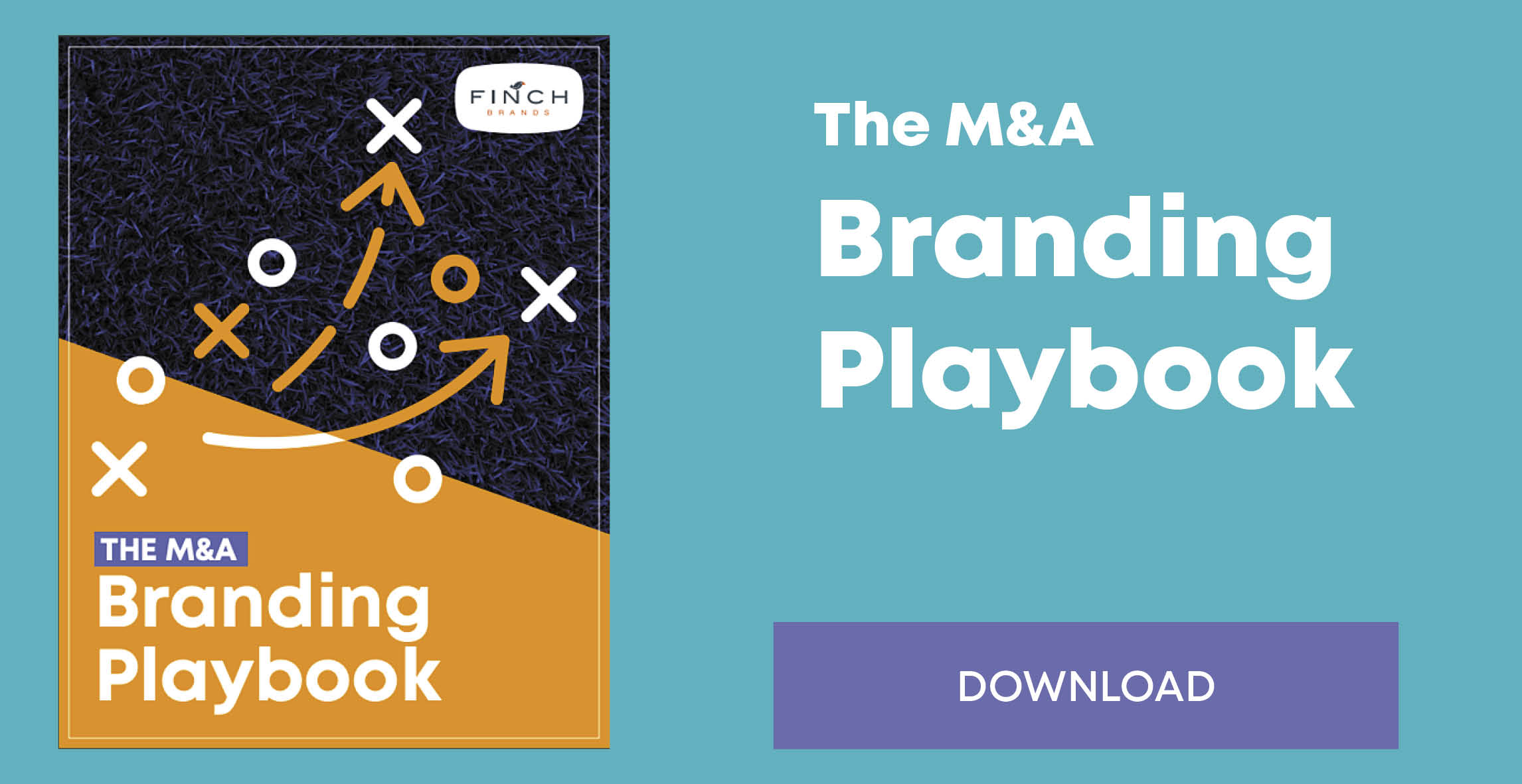5 Common Mistakes in M&A Branding

When it comes to M&A branding, the right path forward is unique to each situation. In order to activate the full potential of the deal from a branding perspective, companies must gather insights, build a strategy, and thoughtfully introduce go-forward brand choices both internally and externally.
From our many years of managing M&A branding work streams, we’ve identified five common mistakes well-intentioned companies make. Any of these mistakes can lead to employee disengagement, customer alienation, and/or brand equity destruction.
1. Making key branding decisions too quickly
After the legal and financial components of a merger or acquisition are agreed to, leadership often starts to feel a (usually misguided) sense of a ticking clock. This leads to a truncated brand development process — and often to a quick but ultimately ill-informed decision to eliminate the acquired brand name.
This approach is a recipe for equity destruction and customer and employee alienation. Even if the right end result is to migrate away from the acquired brand name, it should be done through a careful process to preserve brand equity while educating customers and colleagues along the way.
The marketplace usually has enough patience to understand that it takes time to develop the right brand strategy. A transitional communications plan is a far better approach than a knee-jerk reaction to sacrifice brand equity simply to get a decision made quickly.
2. Making key branding decisions too slowly
On the flip side, companies may fear the investment or emotion of a brand integration process and avoid moving forward altogether. They soon find themselves several years into the deal with a cluttered and inefficient jumble of multiple names and logos. Worse yet, it is likely in scenarios like this that internal culture has also failed to smoothly integrate. The result: internal silos and confused customers.
Because most mergers and acquisitions are based on a deal thesis of 1+1=11, failing to integrate efficiently leaves key cross-sell and upsell benefits on the table. It is better to undertake an M&A branding process along with the deal, even if it requires financial and emotional investment.
There are situations when it makes sense to maintain separate brands. That conclusion, however, should be reached thoughtfully and with careful planning as opposed to being the result of institutional reluctance to undertake the process in the first place.
3. Focusing only on external communications
A common definitional mistake is to regard the brand as primarily an external marketing artifact. The strongest brands are built from the inside out — this is always true, especially in moments of transition. If an M&A branding process only focuses on what the customer sees (i.e. the logo or website), it is failing to create the internal brand advocates whose efforts lead to engaged, happy customers.
Change is hard. While M&A is intended to create value for the company, team members of both companies will want to understand its impact on them, where the company is going, and the culture that will sustain it. This is why teammates are both an important information source and target audience of any M&A branding process. Otherwise, there is risk of confusion and “brain drain.”
4. Acting as if the branding process is just about cosmetics
Name and logo are among the most visible elements of a brand, but they should be based on something deeper. A well-managed M&A branding process will ultimately yield corporate identity and look-and-feel elements that are extensions of the go-forward company’s vision. Without that vision, however, brand design is an uncoordinated exercise akin to fumbling for your keys in the dark.
M&A usually involves new capabilities, leaders, teammates, facilities and customers, and underlying the transaction is a core belief that it will leave the company and its customers better off. The emergent brand’s design aesthetic should be focused on expressing that core belief.
5. Focusing too much on “Day 1”
Designating “Day 1” as the start of a new era is an important part of the M&A branding process. Yet not everything needs to be done on that date. When Day 1 is treated as a singular moment to flip every switch, it constrains the process, leads to mistakes, and deprives the company of a long tail of positive momentum.
The excitement around Day 1 should be palpable, internally and externally. We recommend that certain core elements (messaging, name, logo, and a new website) be introduced on Day 1 and coincide with events and customer contacts to celebrate the milestone. Yet, releasing other new elements in an orderly cadence after Day 1 can extend the “news cycle” and create ongoing momentum to support the go-forward branding approach. Read more on Preparing for Day 1: Winning the Rollout here.
A merger or acquisition doesn’t come with a hard-and-fast rule set and the right path forward will look different with each situation. Yet avoiding these mistakes will increase the success rate and confidence level of your integration efforts.






